Turkey Islands where cars are banned
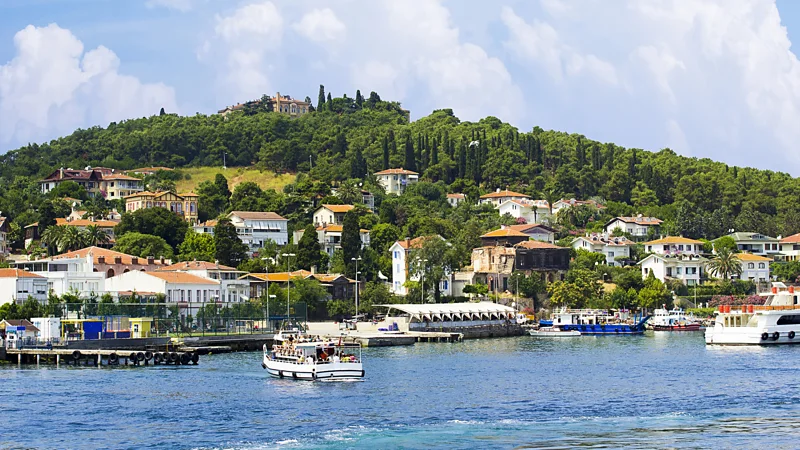 The Adalar islands boast magnificent yet weathered palaces and mosques, providing a window into Istanbul's diverse history and serving as a tranquil retreat from the bustling city.
The Adalar islands boast magnificent yet weathered palaces and mosques, providing a window into Istanbul's diverse history and serving as a tranquil retreat from the bustling city.
Seagulls soared around the iconic Galata Tower in Istanbul, and the sound of foghorns echoed across the Bosphorus. The Kabataş ferry terminal bustled with morning activity, while simit vendors quickly sold their goods to commuters rushing through the turnstiles.
Despite the sunny weather, as the ferry— one of the recognizable yellow, white, and black vapur vessels connecting Istanbul's various neighborhoods in both Europe and Asia— ventured into the Sea of Marmara, the January waves tossed it like a drunken sailor.
Passing by the minarets and high-rise buildings of Kadıköy and Fenerbahçe, my destination was the Adalar islands, a group of nine islands, only four of which are inhabited, visible through the misty windows.
Referred to as the "Princes' Islands" in English, Adalar was historically used as a place of exile for bothersome princes and political adversaries by both Byzantine Emperors and Ottoman Sultans. It also served as the final sanctuary for the Greek and Armenian communities of the Ottoman Empire. Today, these car-free islands, just an hour away from Istanbul by public ferry, offer a window into the city's multicultural past and provide a verdant escape from the hustle and bustle of Europe's largest city.
Historian Bettany Hughes, in her book "Istanbul: A Tale of Three Cities," reflects on the contrast between the serene beauty of the Princes' Islands, resembling sunlit otters from Istanbul's ferries, and their grim history. She notes that these islands were once sites of torture, imprisonment, and even blinding of princes. What is now an enjoyable boat journey to the archipelago was often a journey of suffering in past centuries.
Evolution of Exile on the Princes' Islands
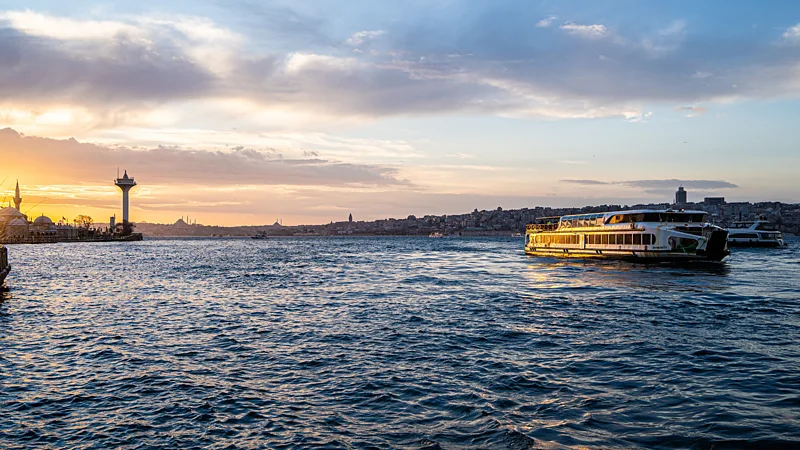 Fortunately, the grim practice of blinding exiles before their departure has long been abandoned. However, according to my guide for the day, Özge Acar from Istanbul Tour Studio, the Princes' Islands have transitioned into a place of voluntary isolation. In the 1930s, figures like Leon Trotsky sought refuge on Adalar to escape persecution.
Fortunately, the grim practice of blinding exiles before their departure has long been abandoned. However, according to my guide for the day, Özge Acar from Istanbul Tour Studio, the Princes' Islands have transitioned into a place of voluntary isolation. In the 1930s, figures like Leon Trotsky sought refuge on Adalar to escape persecution.
Writers and artists, including Istanbul novelist Orhan Pamuk, have drawn inspiration from the islands, with Pamuk's family owning a residence there. Acar herself experienced a self-imposed exile on Kınalıada, the smallest inhabited island, during the pandemic, joining the island's small winter population of just 500. She described the experience as an opportunity to disconnect from the bustle of Istanbul and immerse herself in the island's tranquility, where daily life revolves around a handful of ferry arrivals.
Acar, who is not only a tour guide but also a trained epigraphist with expertise in ancient languages, provided insights into the four inhabited islands, noting both their modern Turkish names and their original Greek appellations. From smallest to largest, these are Kınalıada (known in Greek as "Proti," meaning first), Burgazada (Antigoni), Heybeliada (Halki), and Büyükada (Prinkipo).
Acar further explained that many of the islands' traditional inhabitants belonged to Istanbul's minority groups, particularly Greeks and Armenians. Despite the Ottoman conquest of Constantinople in 1453, the islands retained a strong Byzantine identity, with affluent families from the multicultural Ottoman Empire often maintaining residences there.
Legacy of Multiculturalism in Istanbul and the Princes' Islands
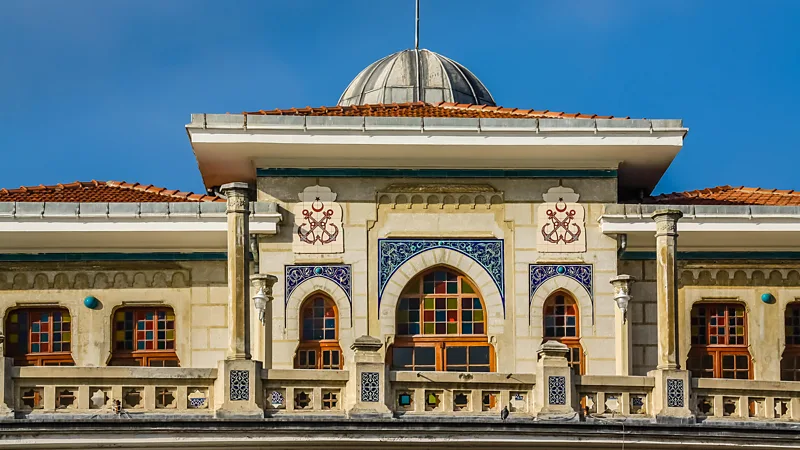 The Ottoman Empire was renowned for its multiculturalism, encompassing a plethora of ethnicities and nationalities from the Balkans to North Africa. However, the empire's dissolution following World War One triggered significant population exchanges of Muslims and Christians between the new Turkish Republic and neighboring countries such as Greece.
The Ottoman Empire was renowned for its multiculturalism, encompassing a plethora of ethnicities and nationalities from the Balkans to North Africa. However, the empire's dissolution following World War One triggered significant population exchanges of Muslims and Christians between the new Turkish Republic and neighboring countries such as Greece.
Istanbul, though, diverged from this pattern initially, allowing Greeks and Armenians to remain in the city and on the Princes' Islands. Over the course of the 20th century, factors like emigration, integration, and at times, discrimination and pogroms, led to a decline in the city's Greek population. Nevertheless, a few Greek inhabitants persist on the islands today, serving as a vestige of the Ottoman era.
According to Acar, this turbulent history has fostered a distinct island identity that staunchly distinguishes itself from the mainland, evoking a sense of pride and emotional attachment to the past. Islanders perceive their narrative as uninterrupted, a privilege they cherish deeply.
Upon arriving at Heybeliada, the second-largest island in the archipelago, we encountered a picturesque harbor adorned with restaurants, many adorned in the traditional blue and white hues of Greek Orthodoxy. Ottoman-style residences lined the expansive, tree-lined boulevards. With the islands being mostly car-free, we utilized an electric golf buggy, which also served as a taxi, for the ascent to the 9th-century Monastery of Hagia Triada (The Holy Trinity Monastery).
Inside the Orthodox Christian monastery, a Turkish flag waved in the courtyard, while Meletios Stefanatos, a priest dressed in ornate black robes, welcomed us in the entrance hall. He guided us through a library filled with ancient religious texts and centuries-old editions of epic tales like the Iliad.
Stefanatos noted that while the majority of Heybeliada's residents are now Muslim, small pockets of Armenian and Greek Christians, numbering around 30 or 40, still exist. We observed a chapel adorned with Byzantine icons, some dating back over a millennium, showcasing the enduring cultural and religious diversity of the island.
Preserving Heritage and Tranquility on the Princes' Islands
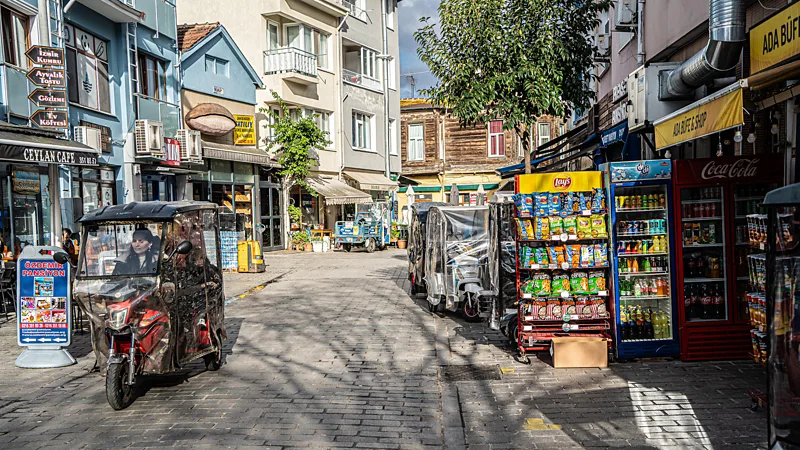 Stefanatos, originally from Athens, has resided on the island for the past four years. He recounted the history of the Theological School of Halki, established at the monastery in 1844. Despite its significance as an educational institution, tensions between Turkey and Greece led to the school's closure in 1971. However, Stefanatos emphasized the warmth and friendliness of the islanders towards Greek residents, noting the large number of Turkish visitors to the monastery from the mainland. While worship is permitted at the monastery, teaching is restricted due to political issues, which, he stressed, are not rooted in religious or ethnic divides but rather in political disputes.
Stefanatos, originally from Athens, has resided on the island for the past four years. He recounted the history of the Theological School of Halki, established at the monastery in 1844. Despite its significance as an educational institution, tensions between Turkey and Greece led to the school's closure in 1971. However, Stefanatos emphasized the warmth and friendliness of the islanders towards Greek residents, noting the large number of Turkish visitors to the monastery from the mainland. While worship is permitted at the monastery, teaching is restricted due to political issues, which, he stressed, are not rooted in religious or ethnic divides but rather in political disputes.
After descending the hill and passing by a picturesque sandy beach, we reached the harbor in time for the next ferry to Büyükada. Known as "The Big Island," Büyükada greeted us with numerous Greek-style tavernas lining the seafront.
The islands seem frozen in time, with many establishments, including restaurants, hotels, and cafes on Adalar, adorned in the blue and white colors reminiscent of Greece. Acar explained that islanders draw on their heritage to attract curious Turkish tourists, even though few identify as Greek Orthodox Christians anymore. Following a lunch of hummus and vegetable kebabs at a Greek-style taverna, which could easily fit into any Mediterranean setting, we embarked on an island tour aboard an electric bus.
Acar highlighted the unique challenge of preserving the island's tranquility amidst the bustling metropolis nearby, with a population of 16 million. She praised the island's efforts to maintain its distinct culture, noting that even affluent homeowners, unable to bring their flashy cars due to the island's car-free policy, must adapt to the local lifestyle.
Given the prohibition on cars, locals rely on electric scooters and golf buggies for transportation, while tourists have the option to rent bicycles, take the electric bus, or hike. This shift to electric transport marks a significant improvement from previous years when horse-drawn carts were used for tourist transportation. In 2020, due to concerns about the welfare of the horses, the local government banned the use of carriages, replacing them with electric vehicles.
Exploring the Tranquil Oasis of the Princes' Islands
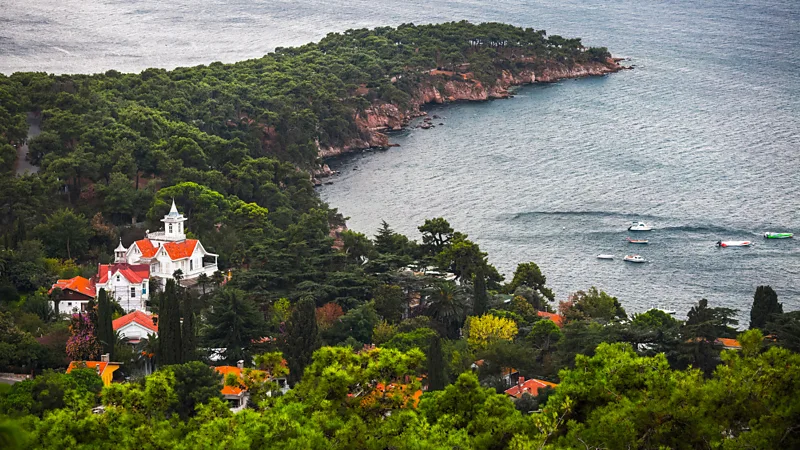 Despite the islands' accessibility to foot passengers, with a fare of approximately 45 Turkish Lira (just over £1), Adalar has retained its lush greenery remarkably well. During our hike around Büyükada, we traversed trails winding through forests and descending to sandy beaches, passing by faded summer palaces once inhabited by Ottoman princes and often finding ourselves in the shade of minarets. This verdant landscape appeals greatly to visitors from the mainland, who seek fresh air and immersion in nature.
Despite the islands' accessibility to foot passengers, with a fare of approximately 45 Turkish Lira (just over £1), Adalar has retained its lush greenery remarkably well. During our hike around Büyükada, we traversed trails winding through forests and descending to sandy beaches, passing by faded summer palaces once inhabited by Ottoman princes and often finding ourselves in the shade of minarets. This verdant landscape appeals greatly to visitors from the mainland, who seek fresh air and immersion in nature.
Afterward, we boarded an electric bus and waited in the grand 19th-century terminal by the harbor for the next ferry back to the mainland. Another local guide, Gulperi Parlak, had advised me not to rush while on the islands. She suggested taking a leisurely trip, savoring the scenery, and experiencing the unique multicultural atmosphere. "If you have only a few days in Istanbul, I wouldn't recommend a trip to Adalar because it's at least an hour there and back," she had said. "But if you have more time to spare, you should go. The islands are perfect in summer. We locals love visiting the sandy beaches and basking in the sunshine."
The locals' advice was clear: don't hurry, but instead, savor a leisurely journey to the islands, appreciating the diverse scenery and embracing the multicultural ambiance.
As the ferry departed, Acar cautioned us, "You'll feel a bit disoriented when we switch to the Marmaray line [a commuter rail line in Istanbul] after spending the whole day on the islands." And indeed, she was correct. The ferry disembarked us during rush hour, thrusting us back into the bustling chaos of Istanbul, where we navigated our way onto the rail line connecting the city's Asian and European sides. Already, I found myself yearning for another day of solitude and tranquility on Adalar.










































